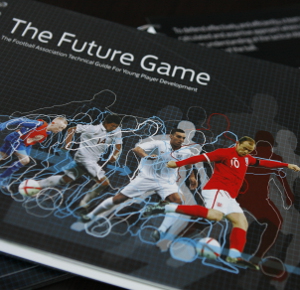Monthly Archives: November 2013
Football Basics – Passing
In the role of a football performance analyst, IT skill is one of the necessary skills in the skill set. However, it shouldn’t be over-emphasised. If what you are doing everyday is video tagging to clip and code the game footage, and then produce individual clips for individual players and coaches (e.g. putting all the shot clips together for the striker). Can you consider yourself as an analyst? Are you really analysing the game? It is a topic covered by some posts (e.g. Video Editor v Performance Analyst). My view is that a football performance analyst should do much more than that to analyse the game. For example, performance analyst should have some knowledge about data management and statistical analysis in my opinion. However, in order to analyse the game, should the analyst have some basic football knowledge also? Some posts have covered the overlapping area between the coach and the analyst (e.g. Should all coaches be analysts?). I firmly believe a football coach has a higher potential to be a better performance analyst because of the football knowledge. Therefore, I have decided to set up a new category called “Basics” in the website. “Basics” means football basics and my aim is to cover football knowledge about various techniques, principles of play and tactical knowledge, system of play (formation), etc. Apart from using text, I will use lots of diagrams and videos to explain the technical points in football.
Why passing is so important?
The first topic I choose for this new category is passing because it is very important in a football game. It is one of the two techniques used most frequently – controlling and passing the ball. When a player receives the ball, over 80% of occasions he will pass the ball to a teammate and on other occasions he will either shoot or dribble (Hughes, 1987). The FA emphasised the importance of passing by considering the technical demands of the game in the book “The Future Game” (FA Learning, 2010).
These are some key statistics mentioned in the book about passing:
- More teams at the highest level now value the retention of possession, with leading teams often dominating possession in the ratio of approximately two to one (or 65% to 35%)
- Players regularly reach 80% pass success, with some players in the world class level having pass success rates of 90% and above
- 20% more passing and receiving situation during games comparing with 2002
- One-touch passing: Champions League teams are creating as many as 50% of their goals with one touch passing sequences before the final strike at goal
To know more about passing, we can refer to the technical definition from the academic study (Ford et al, 2004):
Pass: player in possession sends the ball to a teammate (e.g. using the foot, thigh or chest; using various techniques such as ground, lofted, chip, flick or volley; over short or long distances)
There are different views to identify what a successful pass is. Some people said as long as a teammate has a touch of the ball then it is a successful pass (even the touch is bad and they lose possession). Another view suggests that the pass is successful if possession is retained (Carling et al., 2005). I prefer the latter definition.
Regarding the distance of the pass, Hughes (1987) suggested that short passes are 30 yards or less and long passes are more than 30 yards.
Generally, I divide passing techniques into two groups: ground pass and loft pass. There are many technical points to cover in these two passing techniques so I will leave it to next week. In conclusion, it is just a starting point of the new category. I will keep writing posts in other categories also. If you want me to talk about any particular topic, please feel free to leave the comment.
Reference:
CARLING, C., WILLIAMS, A.M., & REILLY, T., 2005. Handbook of Soccer Match Analysis. London: Routledge
Carroll, R., 2012. Should All Coaches Be Analysts? [online][viewed 6 November 2012]. Available from: http://thevideoanalyst.com/should-all-coaches-be-analysts/?utm_source=feedburner&utm_medium=email&utm_campaign=Feed%3A+thevideoanalyst+%28thevideoanalyst.com%29
Carroll, R., 2013. Video Editor v Performance Analyst [online][viewed 12 September 2013]. Available from: http://thevideoanalyst.com/video-editor-v-performance-analyst/
FA LEARNING, 2010. The Future Game. Great Britain: FA Learning
FORD, P., WILLIAMS, M., & BATE, D., 2004. A quantitative analysis of counter attacks from the defensive third. Insight, 7(3), 29-32
HUGHES, C., 1987. Soccer Tactics and Skills. Great Britain: Queen Anne Press
OXFORDSHIRE FA, 2013. The-future-game [digital image][viewed 12 November 2013]. Available from: http://www.oxfordshirefa.com/~/media/countysites/oxfordshirefa/images/boxes%20300×290/the-future-game.ashx?w=300&h=290

